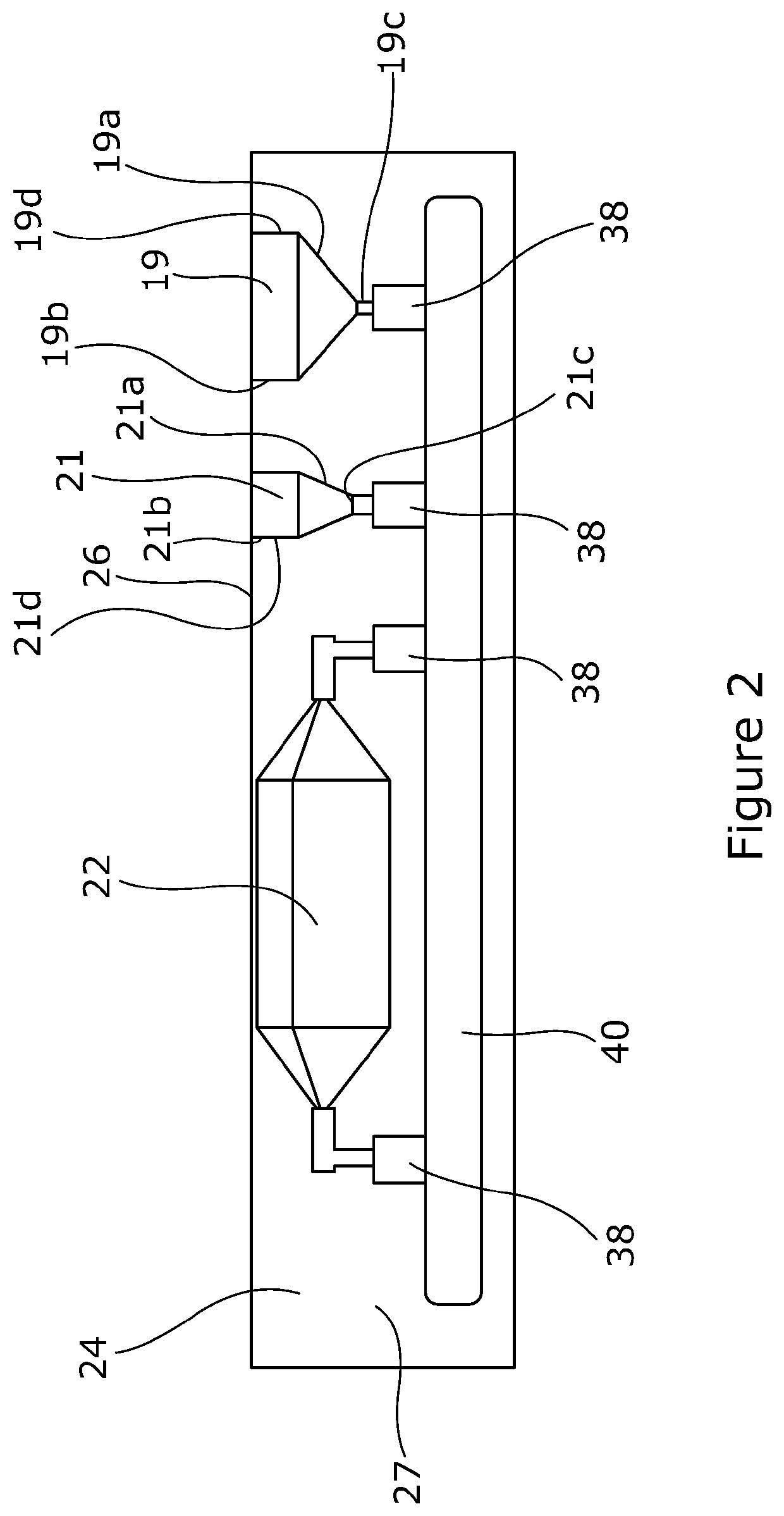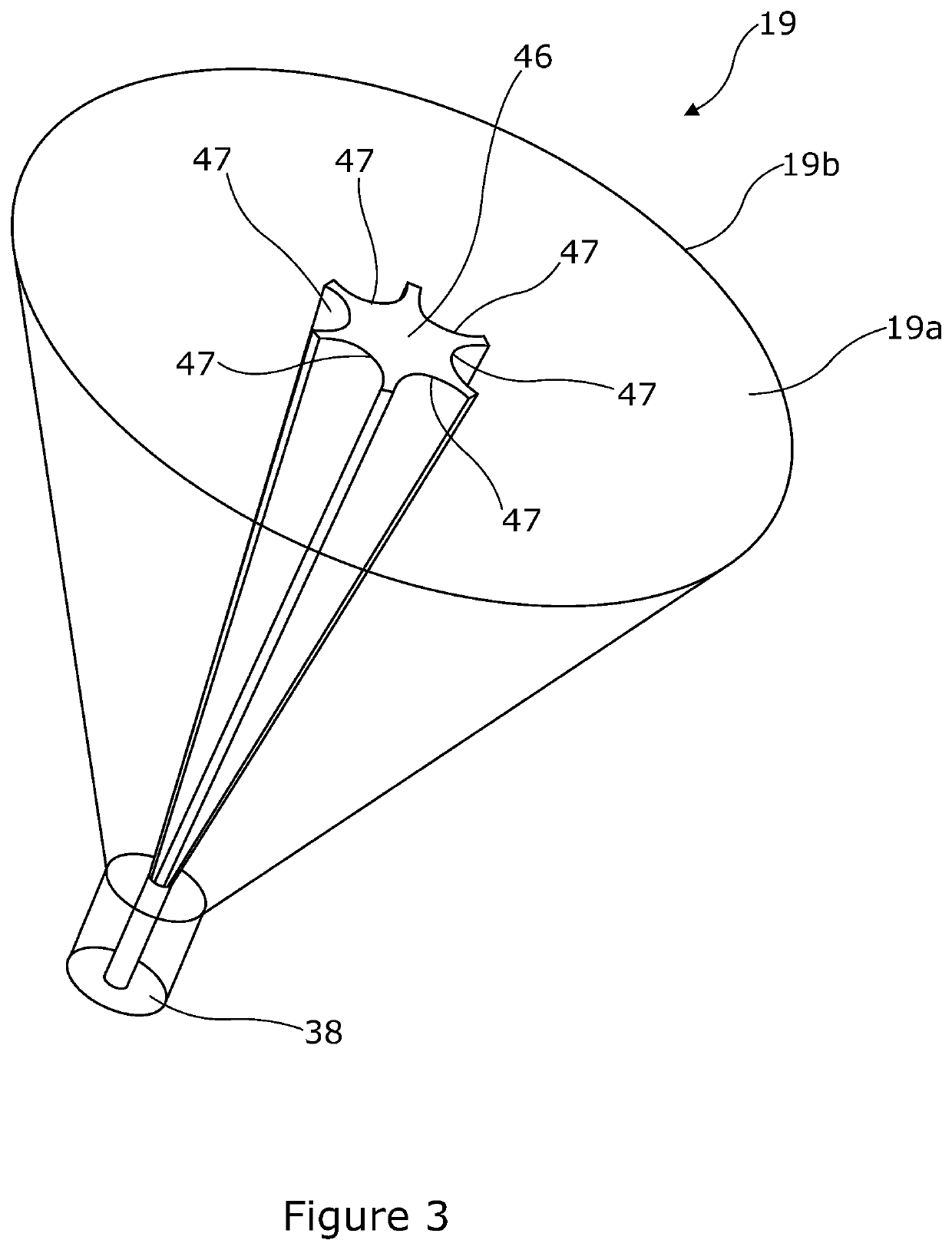Coaxial reflectometer sensor elements
a technology of reflectometer and sensor element, applied in the direction of well-logging, electrical/magnetic detection, survey, etc., can solve the problems of resistivity measurement ambiguity however tending to diminish, signal adverse influence, and techniques that have not been popularized by logging engineers and analysts, and achieve the effect of attenuating unwanted reflections
- Summary
- Abstract
- Description
- Claims
- Application Information
AI Technical Summary
Benefits of technology
Problems solved by technology
Method used
Image
Examples
Embodiment Construction
[0038]Referring to the figures apparatus 10 for determining the values of properties of layers of or associated with a borehole 11, and a borehole system incorporating such apparatus 10, are illustrated. The borehole 11 is shown extending through part of the Earth's crust in a manner that is familiar to those of skill in logging and related disciplines.
[0039]The borehole 11 is formed in rock 12 e.g. by drilling and may extend for hundreds or thousands of metres or feet, as indicated schematically in FIG. 1. The aim of creating the borehole 11 in the illustrated embodiment is to penetrate a schematically illustrated formation 13 that contains e.g. within pores in the rock 12 a fluid, or mixture of fluids, of interest as exemplified herein. The borehole may have as its primary purpose the exploration of the formation 13 or the extraction of fluid(s) of interest to an uphole, surface location 14. Boreholes such as borehole 11 also may be created and logged for other purposes. Non-limit...
PUM
 Login to View More
Login to View More Abstract
Description
Claims
Application Information
 Login to View More
Login to View More - R&D
- Intellectual Property
- Life Sciences
- Materials
- Tech Scout
- Unparalleled Data Quality
- Higher Quality Content
- 60% Fewer Hallucinations
Browse by: Latest US Patents, China's latest patents, Technical Efficacy Thesaurus, Application Domain, Technology Topic, Popular Technical Reports.
© 2025 PatSnap. All rights reserved.Legal|Privacy policy|Modern Slavery Act Transparency Statement|Sitemap|About US| Contact US: help@patsnap.com



